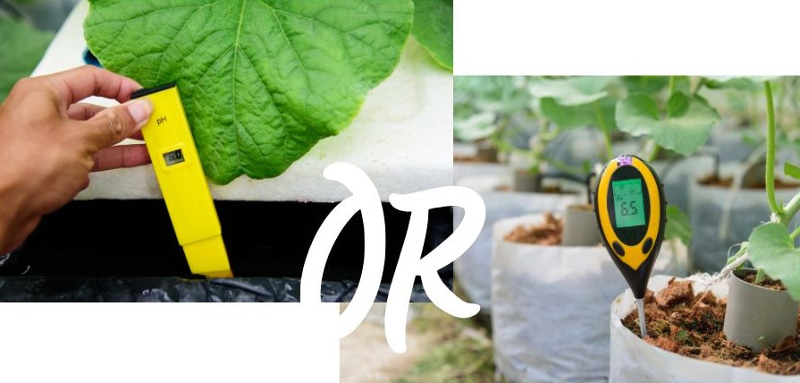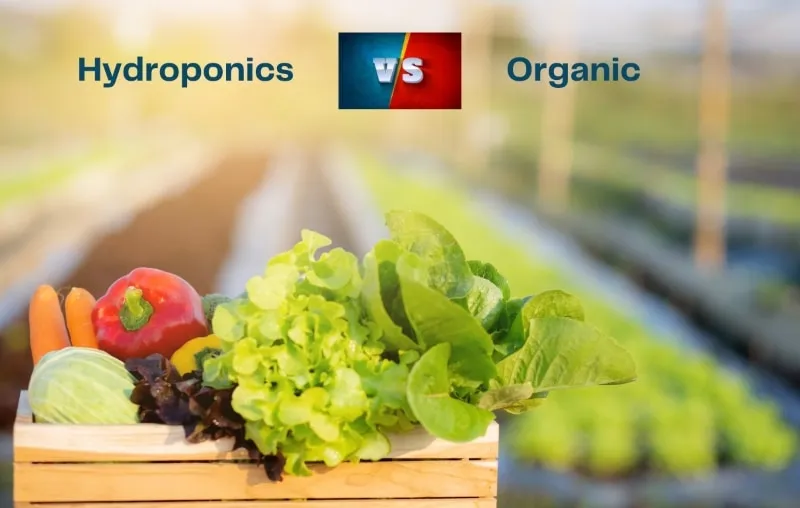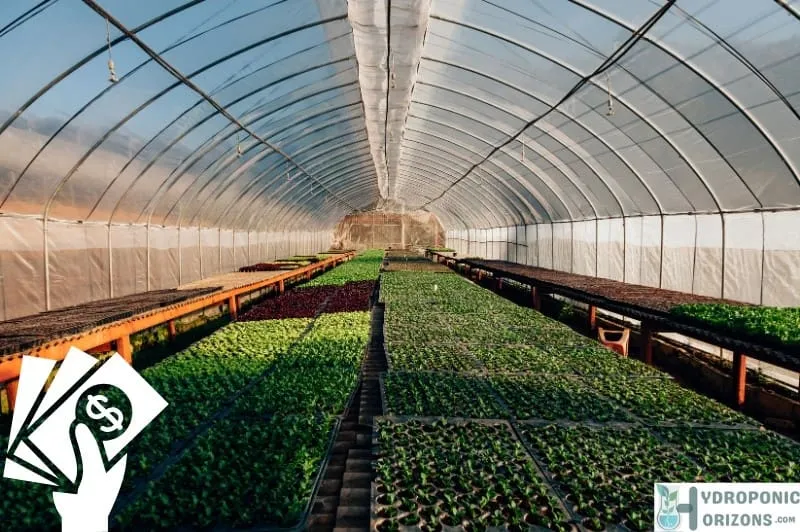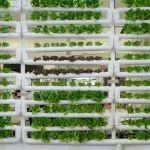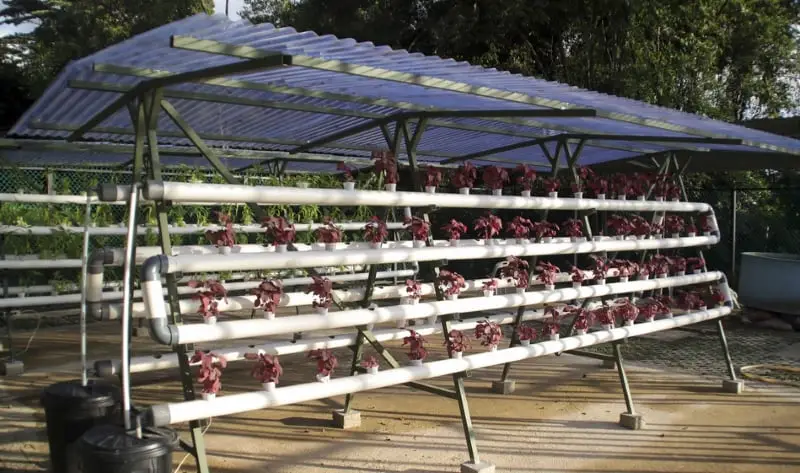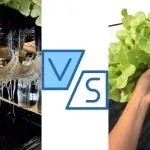If you’re looking for a way to grow your own fresh produce but don’t have a lot of space or access to outdoor gardening, hydroponics might be the perfect solution for you. Hydroponic gardening is a method of growing plants without soil, using nutrient-rich water instead. It’s a great way to grow plants indoors, and it’s also a more sustainable and efficient way to grow crops compared to traditional soil-based gardening.
While you can certainly purchase pre-made hydroponic systems, building your own DIY hydroponic garden can be a fun and rewarding project. Not only can you customize your system to fit your space and needs, but it can also be a more cost-effective option. In this article, we’ll show you how to grow hydroponics at home with 7 simple DIY systems. Whether you’re a seasoned gardener or a beginner, these systems are easy to build and maintain, and they can produce a wide variety of crops.
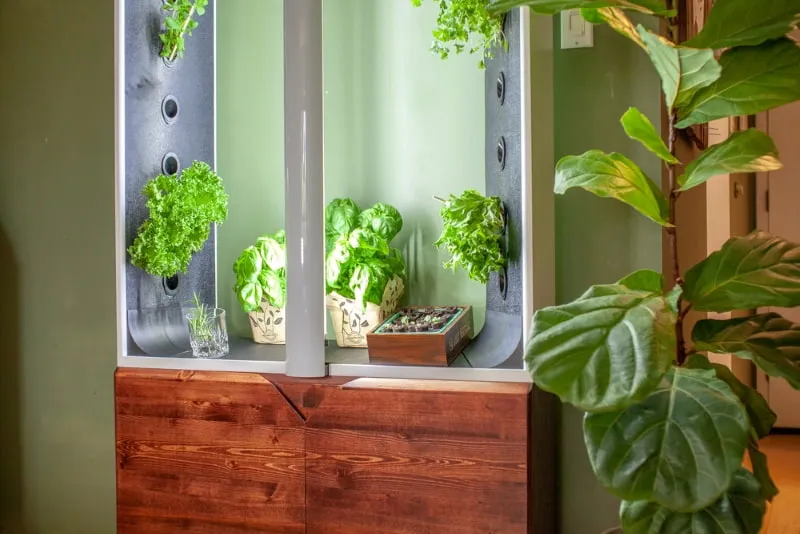
From passive hydroponics to ebb and flow systems, we’ll cover a range of DIY hydroponic gardening methods that you can try at home. Once you’ve picked your preferred method, you’ll cover in separate articles how to build your own hydroponic garden using materials like mason jars, plastic bottles, and PVC pipes. We’ll also provide tips on how to choose the right plants for your hydroponic garden, how to maintain the nutrient levels in your water, and how to troubleshoot common problems that may arise. With these simple DIY hydroponic systems, you’ll be growing your own fresh produce in no time!
What Are DIY Hydroponic Gardens?
Hydroponic gardening is a soil-free way of growing plants that is becoming increasingly popular among home gardeners. DIY hydroponic gardens are systems that you can build yourself using readily available materials. These systems are easy to set up and maintain, and they allow you to grow plants indoors or outdoors, all year round.
DIY indoor hydroponics systems are perfect for people who want to grow fresh herbs, vegetables, and fruits but don’t have access to a garden or outdoor space. With a hydroponics DIY system, you can grow plants in a controlled environment, which means you can control the temperature, light, and nutrients that your plants receive. This makes it possible to grow plants faster and more efficiently than traditional gardening methods. Keep in mind that you can absolutely grow hydroponics outside; you’ll just have to keep a sharper eye on things like temperature, light, etc.
Many garden enthusiasts ask why hydroponics is so expensive. If you don’t have the budget to buy expensive readymade kits, then DIY is the way to go.
There are many different types of hydroponics DIY systems that you can build at home. Some of the most popular systems include:
- Deep Water Culture (DWC) system
- Drip system
- Ebb and Flow system
- Vertical garden system
Each of these systems has its own advantages and disadvantages, so it’s important to choose the one that best suits your needs and budget. With a hydroponics DIY system, you can also customize the system to fit the size and shape of your space. This means you can build a system that fits on a windowsill, or you can build a larger system that takes up an entire room.
Hydroponics DIY systems are a great way to grow plants at home. Not only are they easy to set up and maintain, but they also allow you to grow plants faster and more efficiently than traditional gardening methods. With a little bit of research and some DIY skills, you can build a hydroponics DIY system that will provide you with fresh herbs, vegetables, and fruits all year round.
Related: There are certain components that go into any kind of hydroponic system. Before you start, read our article on step by step hydroponics for beginners.
7 Simple DIY Hydroponic Systems
With hydroponics, you can grow plants faster, use less water, and grow more plants in a smaller space. Here are seven simple DIY hydroponic systems that you can try at home:
Kratky Method

The Kratky method is a passive hydroponic system that is easy to set up and requires no electricity or pumps. It involves growing plants in a container filled with a nutrient solution, with no water movement. The plants grow in net pots filled with perlite or rockwool, and the roots grow down into the nutrient solution. This system is ideal for growing leafy greens and herbs.
Here is what you’ll need to start:
- A growing container: You will need a container that is large enough to hold the plants you want to grow. The container should be opaque to prevent algae growth.
- Net pots: You will need net pots to hold the plants and allow the roots to grow into the nutrient solution.
- Growing medium: You will need a growing medium to support the plants and help them grow. Some common growing mediums include rockwool, perlite, and vermiculite.
Wick System
The wick system is another passive hydroponic system that is easy to set up. It involves growing plants in a container filled with a nutrient solution, with a wick that draws the solution up to the plant roots. The plants grow in net pots filled with perlite or rockwool, and the roots grow down into the nutrient solution. This system is ideal for growing small plants like herbs and lettuce.
In addition to the 3 components needed for the Kratky method above, here are two additional ones:
- A reservoir: You will need a reservoir to hold the nutrient solution. The reservoir should be placed below the growing container to allow the nutrient solution to be drawn up to the plants through the wicks. You should also make sure that the reservoir is opaque to prevent algae growth and that it has a lid to prevent evaporation and contamination.
- Wicks: You will need wicks made of cotton or nylon to draw the nutrient solution from the reservoir to the growing medium.
Deep Water Culture (DWC) Hydroponic System
The deep water culture hydroponic system is a simple, easy to set up, active system that involves growing plants in a container filled with a nutrient solution, with an air pump that provides oxygen to the roots. The plants grow in net pots filled with perlite or rockwool, and the roots are submerged in the nutrient solution. Aeration is essential in this hydroponics system as the air supply to the roots will determine how healthy the plants will be. This system is ideal for growing plants that like a lot of water, like lettuce and spinach.
In addition to the growing container, reservoir, net pots, and the growing medium used in the methods above, you will also need an air pump and air stone to provide oxygen to the nutrient solution and prevent the roots from suffocating.
Ebb and Flow Hydroponic System
The ebb and flow hydroponic system is an active system that involves growing plants in a container filled with a nutrient solution, with a pump that floods the container periodically. The plants grow in net pots filled with perlite or rockwool, and the roots are submerged in the nutrient solution during the flood cycle. This system is ideal for growing larger plants like tomatoes and peppers.
In addition to the growing container, reservoir, net pots, and the growing medium used in the methods above, you will also need the following 4 components:
- Flood tray: You will need a flood tray that fits inside the growing container and can hold the nutrient solution.
- Submersible pump: You will need a submersible pump to pump the nutrient solution from the reservoir to the flood tray.
- Timer: You will need a timer to control the submersible pump and the flooding and draining cycles.
- Drainage system: You will need a drainage system to drain the nutrient solution from the flood tray back into the reservoir.
Drip Hydroponic System
The drip hydroponic system involves growing plants in a container filled with a nutrient solution, with a network of thin hoses that drip water directly onto the plants’ root bases at a controlled rate. The nutrient-laden water is moved by an electric pump through tubes to the top surface of the growing medium. A timer controls the rate of water flow to prevent overwatering, which can lead to the roots’ rotting. This system is usually used for larger plants like tomatoes or cucumbers, is highly dependable, and is popular among hydroponic gardeners.
In addition to the growing container, reservoir, net pots, and the growing medium used in the methods above, you will also need the following 4 components:
- Drip lines: You will need drip lines to deliver the nutrient solution to the plants. The drip lines should be placed above the plants and should have drip emitters to control the flow of the nutrient solution.
- Submersible pump: You will need a submersible pump to pump the nutrient solution from the reservoir to the drip lines.
- Timer: You will need a timer to control the submersible pump and the frequency and duration of the nutrient solution delivery.
- Drainage system: You will need a drainage system to drain excess nutrient solution from the growing container.
Nutrient Film Technique (NFT) System
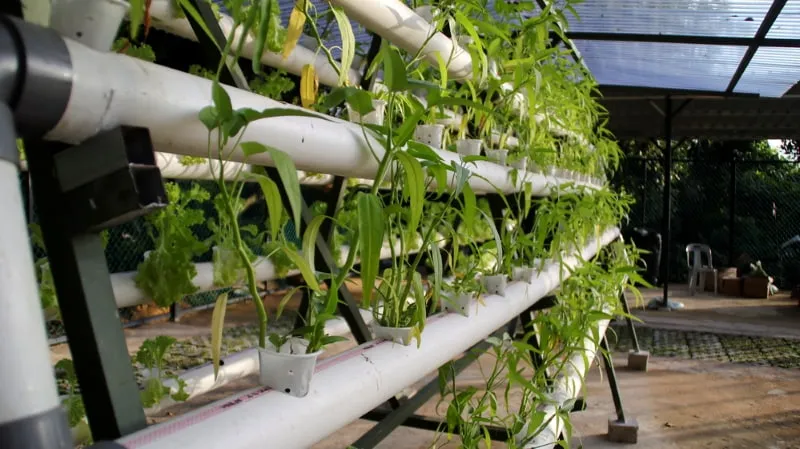
The nutrient film technique (NFT) system is an active system that involves growing plants in a shallow, sloping channel filled with a nutrient solution. The plants grow in net pots filled with perlite or rockwool, and the roots are suspended in a thin film of nutrient solution that flows down the channel. This system is ideal for growing plants that like a lot of oxygen, like lettuce and herbs.
The NFT system needs a slightly different setup from the methods above. In addition to the grow medium, you’ll need the following:
- Growing channel: You will need a growing channel that is long enough to hold the plants you want to grow. The channel should be made of a light-proof material to prevent algae growth.
- Submersible pump: You will need a submersible pump to pump the nutrient solution from the reservoir to the growing channel.
- Timer: You will need a timer to control the submersible pump and the flow of the nutrient solution.
- Drainage system: You will need a drainage system to drain excess nutrient solution from the growing channel back into the reservoir.
- Growing cups: You will need growing cups to hold the plants and allow the roots to grow into the nutrient solution.
Vertical Hydroponics System
The vertical hydroponics system involves growing plants in a tower-like structure, with the nutrient solution flowing down from the top. The plants grow in net pots filled with perlite or rockwool, and the roots are suspended in the nutrient solution. This system is ideal for growing plants in a small space, and it can be made using plastic bottles or PVC pipes.
In addition to the reservoir and the growing medium used in the methods above, you will also need the following components:
- Vertical growing structure: You will need a vertical growing structure that can hold the plants in a stacked arrangement. This structure can be made of PVC pipes, gutters, or other materials.
- Submersible pump: You will need a submersible pump to pump the nutrient solution from the reservoir to the top of the vertical growing structure.
- Timer: You will need a timer to control the submersible pump and the frequency and duration of the nutrient solution delivery.
- Drainage system: You will need a drainage system to drain excess nutrient solution from the bottom of the vertical growing structure back into the reservoir.
- Growing cups: You will need growing cups to hold the plants and allow the roots to grow into the nutrient solution.
FAQs
Conclusion
Congratulations! You have learned about 7 simple DIY systems for how to grow hydroponics at home. With a little effort and some basic equipment, you can start growing your own fresh produce right at home. If you want a comprehensive book on building a DIY hydroponic system, take a look at the list of best books on hydroponics that we’ve compiled.
Remember to choose the right system for your needs and follow the instructions carefully. Keep an eye on the pH level, nutrient levels, and growing conditions to ensure your plants thrive. You may also want to consider adding some natural pest control methods to keep your plants healthy.
If you are feeling adventurous, you can even try creating your own hanging garden like the famous Hanging Gardens of Babylon. These gardens were one of the Seven Wonders of the Ancient World and were built over 2,500 years ago. They were known for their lush greenery and impressive engineering, and you can create your own modern version with a little creativity and some hanging baskets.
Hydroponics is a fun and rewarding way to grow your own food, and with these simple DIY systems, you can get started right away. Happy growing!

